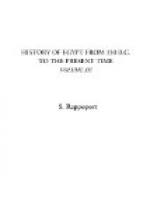As a result of Speke’s discoveries, the Victoria Nyanza took its place on the maps of Africa, and a fair conception had been obtained of the size and shape of Lake Albert Nyanza.
[Illustration: 283.jpg THE FERRY AT OLD CAIRO]
The whole course of the White Nile was also revealed with more or less accuracy, and all the mysterious surmises as to the great flow of the Nile from some unknown headwaters of enormous extent were now solved. It was only necessary to fill in the details of the map in regard to the great lakes and the rivers which flowed into them, and further to investigate the extensive territory between the lakes and the Egyptian settlements to the north. Sir Samuel Baker was the man who more than any other helped to supply the details of the work already accomplished. From Cairo he started on a journey up the course of the Nile. When he had reached Berber, he chose the course of the At-bara, or Blue Nile, the branch which receives the floods of water from the Abyssinian table-lands. He travelled up the western frontier of Abyssinia, proceeding as far as the river Rahad, a river flowing into the Blue Nile from the Egyptian side. From this point Baker turned backwards towards Khartum, which he reached in June, 1862, where he made a stay of some duration. He now made up his mind to search for Speke, and went up the White Nile as far as Gondokoro, where the meeting with Speke took place. Baker left this place March 26, 1863, but met with almost insuperable obstacles in trying to make further advance. The porters deserted, the camels died, and the ammunition and the presents intended to ease the way through the territory of native princes had to be all abandoned. Thus disencumbered, his party ascended the White Nile until they reached the




